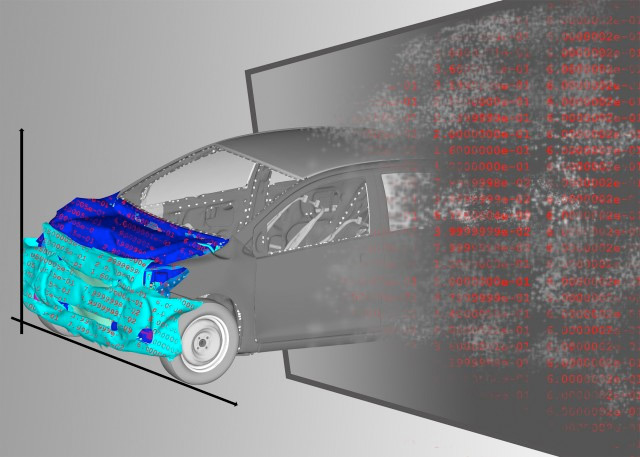Today the development and improvement of new industrial products is based on complex simulation data from very detailed 3D models of a product. Such models are solved numerically using high-performance compute clusters, e.g. to simulate physical processes such as structural deformation, vibrations, or heat exchange. Product design requires the calculation of thousands of variations of a model, which might differ in their geometrical configuration, material parameters, load cases, etc. Engineering know-how is continuously demanded for investigating those changes to satisfy the functional constraints of the product as well as to fulfill safety regulations. This all congregates into a time-consuming design process which involves analysis and evaluation of the effects of those changes, which are based on engineering judgment of complex, time-dependent 3D simulations.
Virtual Product Development
Evaluation of large simulations is a bottleneck
Typically, a very detailed mesh with millions of nodes and elements evaluated at several hundred timesteps is a common representation of one simulation. Post-processing tools that visualize the model behavior or evaluate meta-data for a single simulation are used in such evaluations. The timely development of new products as well as a lack of adequate post-processing tools for the concurrent evaluation of many simulations stands in contrast to desired shorter development phases. This creates a serious bottleneck in the product development. The need to find ways of speeding up the analysis capabilities for the industry is essential.
Reducing complexity
To address this challenge, Fraunhofer SCAI has developed new mathematical methods for the efficient analysis of thousands of complex simulations. Complexity is reduced by calculating equivalent compact representations of each simulation. To obtain such a representation, a geometric decomposition for simulations is used. In fact, this means that a few coefficients represent large variations of a detailed simulation. A time-dependent low dimensional structure is obtained, that can be used also for other tasks like optimization or for the comparison of simulations with experiments.
As a consequence, the interactive analysis and evaluation of thousands of simulations can be carried out within minutes. With the new method, a convenient parametrization of all product simulations is learned. This facilitates
- clustering simulations according to similarity,
- identification of time-dependent bifurcations,
- interpolation of new simulations, and
- the separation of physical effects.
Applications
The described methodology has enabled the evaluation of simulation variants in the automotive industry where huge repositories of CAE (Computer Aided Engineering) models and simulation are common. Several industrial examples demonstrate its applicability for speeding up the design of new products. Application examples grow continuously as engineers realize the potential of the method.
An example is the identification of deformation modes by crash under the influence of the variation of many parameters like part thickness or material properties. With the geometric decomposition approach, complex deformations in car crash simulations are represented by few quantities that can be searched for or compared in large repositories, a task which is very difficult to accomplish using the original mesh representation. With our approach, the identification of stable deformation modes can be achieved much more easily.
In the project VAVID, funded by the German Federal Ministry of Education and Research, simulation results and the sensor data received from machines and installations are reduced to their core by using comparative analysis and data compression. Data comes from automotive and wind energy companies.

